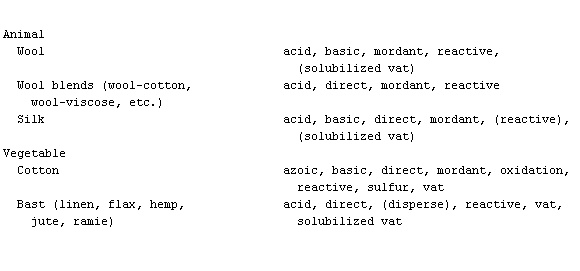Business and Industry Review — ▪ 1999 Introduction Overview Annual Average Rates of Growth of Manufacturing Output, 1980 97, Table Pattern of Output, 1994 97, Table Index Numbers of Production, Employment, and Productivity in Manufacturing Industries, Table (For Annual… … Universalium
rug and carpet — Any decorative textile normally made of a thick material and intended as a floor covering. Floor coverings made of plaited rushes date from the 5th or 4th millennium BC. Carpets were first made in central and western Asia as coverings for earthen … Universalium
art and architecture, Oceanic — ▪ visual arts Introduction the visual art (art) and architecture of native Oceania, including media such as sculpture, pottery, rock art, basketry, masks, painting, and personal decoration. In these cultures, art and architecture have often … Universalium
art conservation and restoration — Maintenance and preservation of works of art, their protection from future damage, deterioration, or neglect, and the repair or renovation of works that have deteriorated or been damaged. Research in art history has relied heavily on 20th and… … Universalium
Timeline of clothing and textiles technology — Timeline of clothing and textiles technology.*pre history spindle used to create yarn from fibres. *(unknown) loom. *c. 27000 BC Impressions of textiles and basketry and nets left on little pieces of hard clay.… … Wikipedia
textile — /teks tuyl, til/, n. 1. any cloth or goods produced by weaving, knitting, or felting. 2. a material, as a fiber or yarn, used in or suitable for weaving: Glass can be used as a textile. adj. 3. woven or capable of being woven: textile fabrics. 4 … Universalium
Māori traditional textiles — An 1847 portrait of Hone Heke and his wife Hariata wearing cloaks made from Phormium tenax fibre Māori traditional textiles are the indigenous textiles of the Māori people of New Zealand. The organisation Te Roopu Raranga Whatu o Aotearoa, the… … Wikipedia
Friendly fire — For other uses, see Friendly Fire (disambiguation). Blue on blue redirects here. For other uses, see Blue on blue (disambiguation). Friendly fire is inadvertent firing towards one s own or otherwise friendly forces while attempting to engage… … Wikipedia
Pulp (paper) — Fibres in wood pulp Pulp is a lignocellulosic fibrous material prepared by chemically or mechanically separating cellulose fibres from wood, fibre crops or waste paper. Wood pulp is the most common raw material in papermaking. Contents … Wikipedia
dye — dyable, dyeable, adj. dyer, n. /duy/, n., v., dyed, dyeing. n. 1. a coloring material or matter. 2. a liquid containing coloring matter, for imparting a particular hue to cloth, paper, etc. 3. color or hue, esp. as produced by dyeing. 4. of the… … Universalium
 Modified cellulose fibres Viscose direct, mordant, pigment, reactive, sulfur,vat, solubilized vatSecondary acetate disperseTriacetate disperse
Modified cellulose fibres Viscose direct, mordant, pigment, reactive, sulfur,vat, solubilized vatSecondary acetate disperseTriacetate disperse Synthetic fibres Courtelle, Orlon)Thermovyl)Polyolefines (Meraklon, Prolene) disperse
Synthetic fibres Courtelle, Orlon)Thermovyl)Polyolefines (Meraklon, Prolene) disperse
